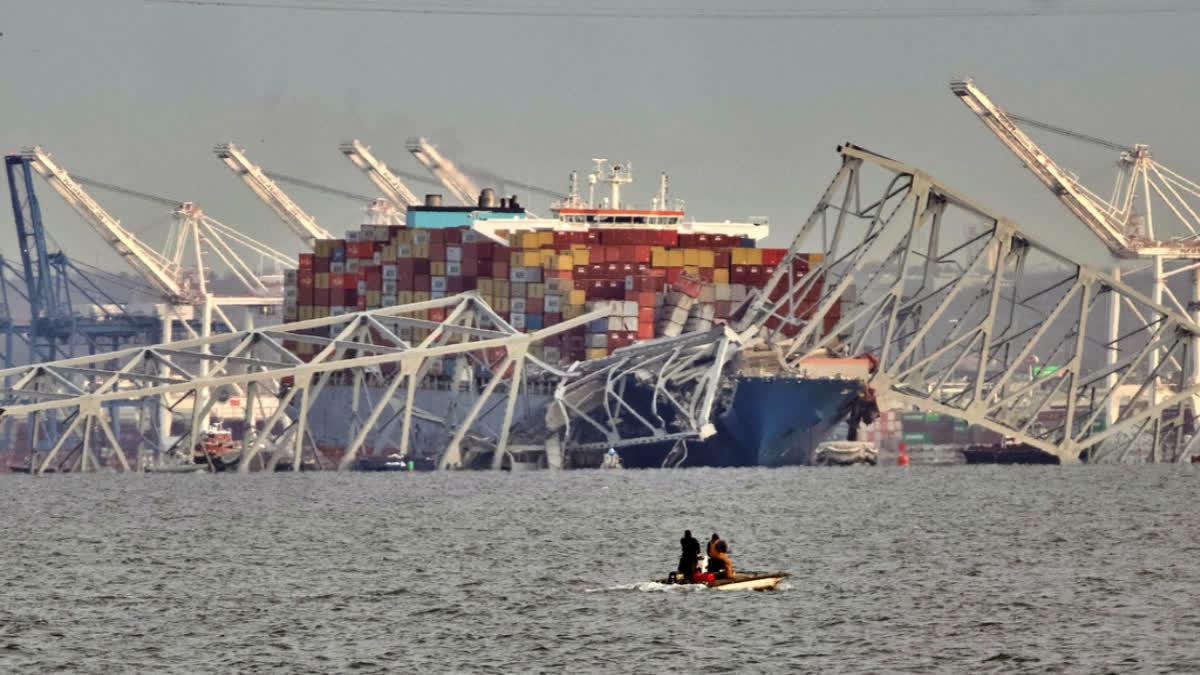New Delhi: When the container ship MV Dali carrying cars from the Baltimore Port in the US to Sri Lanka collided with the Francis Scott Key Bridge over the Patapsco River, attention immediately turned to the broader implications for maritime navigation and the urgent need for enhanced safety measures to prevent similar disasters in the future.
Though the crew members of the MV Dali, all Indians, are safe, six construction workers are believed to have fallen from the collapsing bridge into the frigid waters of the Patapsco River below. The bodies of two of the victims have been recovered so far, while four remain missing and are presumed dead, officials said.
The incident, which occurred around 1:30 am local time on Tuesday, has severely disrupted maritime navigation and vehicular traffic across the bridge. The 2.4-km Francis Scott Key Bridge was a steel arch continuous through truss bridge that spanned the lower Patapsco River and outer Baltimore Port carrying the Baltimore Beltway (Interstate 695) between Hawkins Point, a neighbourhood of Baltimore, and Dundalk in Maryland, a mid-Atlantic state in the US.
Apart from the tragic human casualties, an immediate concern that has arisen is how maritime traffic emanating from Baltimore Port will be affected. The Helen Delich Bentley Port of Baltimore is a shipping port along the tidal basins of the three branches of the Patapsco River in Baltimore on the upper northwest shore of the Chesapeake Bay.
The port is ranked as the ninth-largest port in the US by foreign cargo value. It handles a huge amount of bulk cargo, including more automobiles, forest products, aluminium, iron ore, and sugar than any other US port. It is a leading US port for roll-on/roll-off cargo like cars, trucks, construction equipment and other specialised cargo, and is a major hub for international cargo, with regular shipping lines connecting it to all six inhabited continents.
Given that the maritime traffic from Baltimore port has been disrupted following Tuesday’s incident, what will the economic implications be? According to Subrata K Behera, Senior Manager (Ports and Container Research) at Drewry Maritime Research, the economic implications due to the disruption of maritime traffic from the Baltimore port will not be much.
“The total volume of cargo handled by ports on the east coast of the US is 30 million TEU (twenty-foot equivalent unit) per annum,” Behera told ETV Bharat. “Out of this, the Baltimore Port accounts for only one million TEU.” And what about cargo ships heading for the Baltimore Port?
